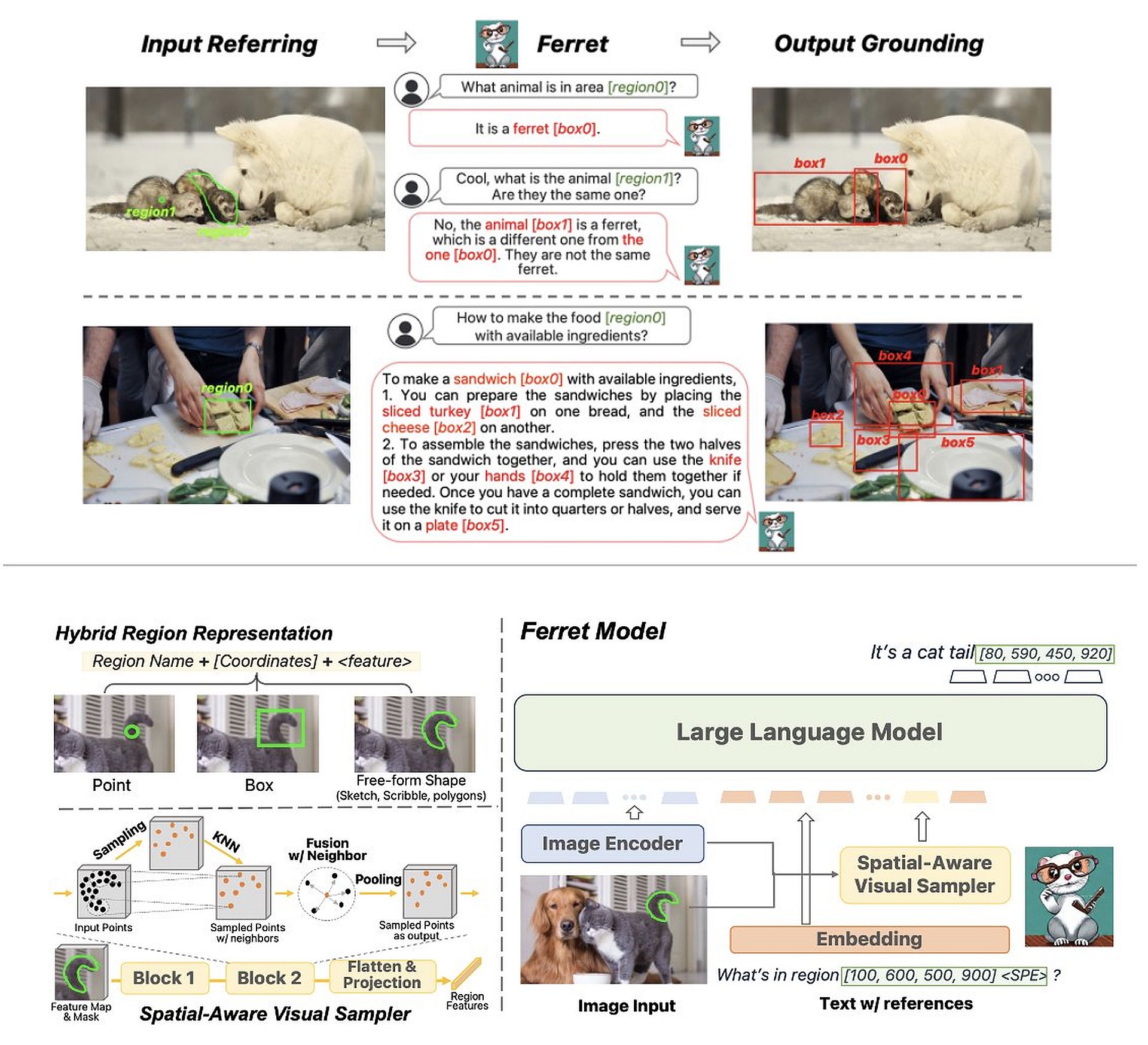Apple has quietly introduced Ferret, its first open-source multimodal large language model (LLM), marking a significant departure from its traditional secretive approach. Developed in collaboration with Columbia University, Ferret integrates language understanding with image analysis, promising groundbreaking applications in various fields. This strategic move reflects Apple’s commitment to stay at the forefront of the rapidly evolving multimodal AI landscape.
Unveiling Ferret
In collaboration with Columbia University, Apple released Ferret, an open-source multimodal LLM, without the fanfare typically associated with such breakthroughs. Unlike its closed-door strategy, this move emphasizes Apple’s dedication to openness and potential collaboration in the AI community.
Also Read: BharatGPT: Reliance Jio’s AI Collaboration with IIT Bombay
Ferret’s Technical Marvel
Ferret, powered by 8 Nvidia A100 GPUs, outshines its counterparts in understanding small image regions and describing them with fewer errors. Trained on the GRIT dataset, it excels in referring and grounding tasks, showcasing Apple’s prowess in generative AI and multimodal capabilities.
Ferret’s approach goes beyond textual comprehension, analyzing specific regions of images and incorporating them into queries. This unique integration allows for contextual responses, offering deeper insights into visual content and setting a new standard in AI capabilities.

Ferret’s Impact on Apple Devices
Ferret’s integration into Apple products could revolutionize user experiences. Improved image-based interactions with Siri, advanced visual search functionalities, augmented user assistance for accessibility, and enriched media understanding are among the potential applications. Developers, too, can leverage Ferret’s capabilities for innovative applications across various domains.
Also Read: Apple Prepares for Breakthrough in AI in 2024 with Apple GPT, Ajax, and iOS 18
Challenges and Future Prospects
While Ferret’s potential impact on Apple devices is considerable, scalability poses a challenge. Apple faces questions about its ability to compete with larger models like GPT-4 due to infrastructure limitations. The dilemma prompts strategic decisions, potentially involving partnerships or further embracing open-source principles.
Our Say
Apple’s introduction of Ferret signals a paradigm shift in its AI strategy. The open-source approach invites collaboration and innovation, reflecting a broader commitment to advancing AI technology. As Ferret’s capabilities unfold, it holds the promise of reshaping how we interact with technology, emphasizing a more nuanced understanding of visual content in AI applications.




